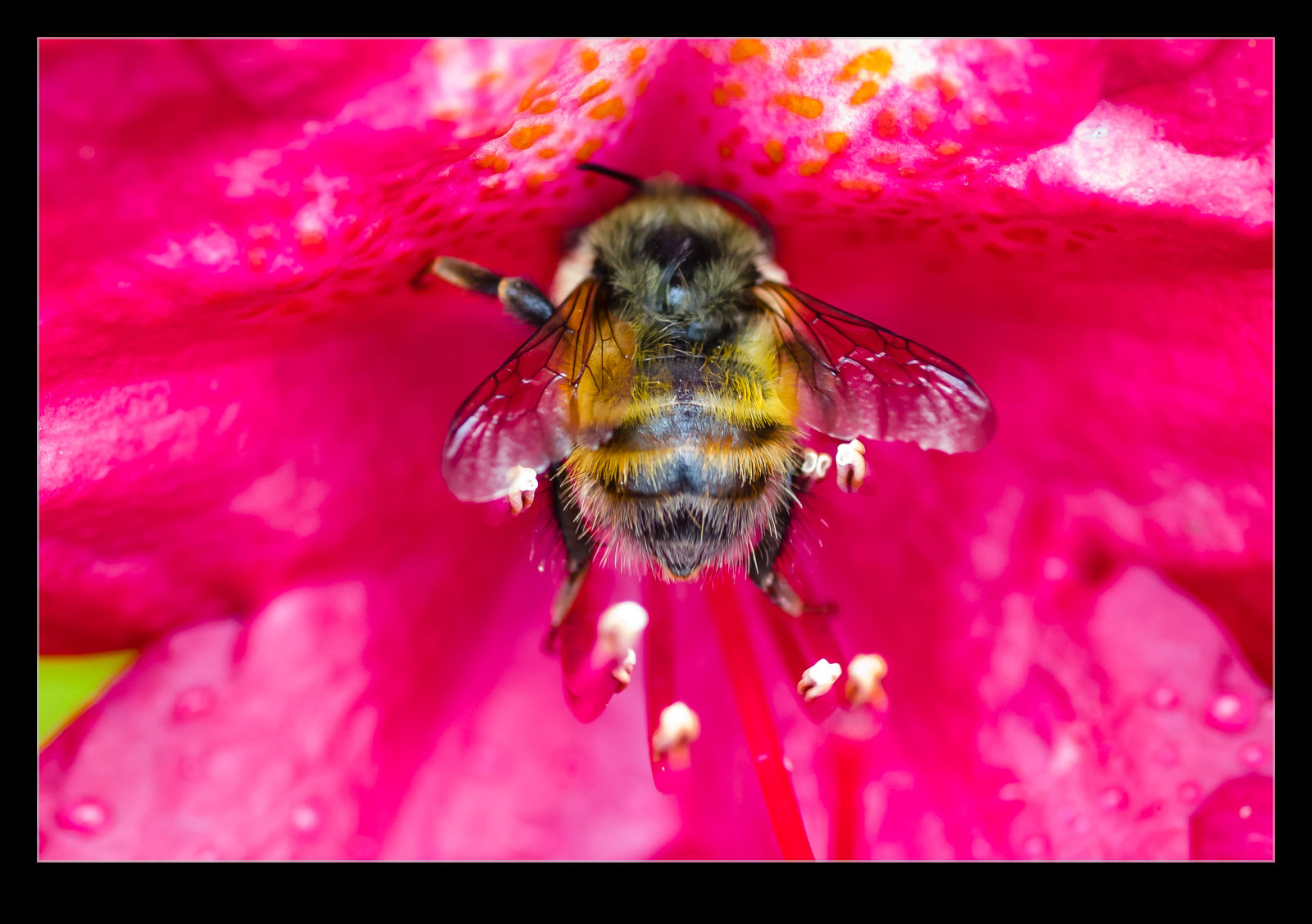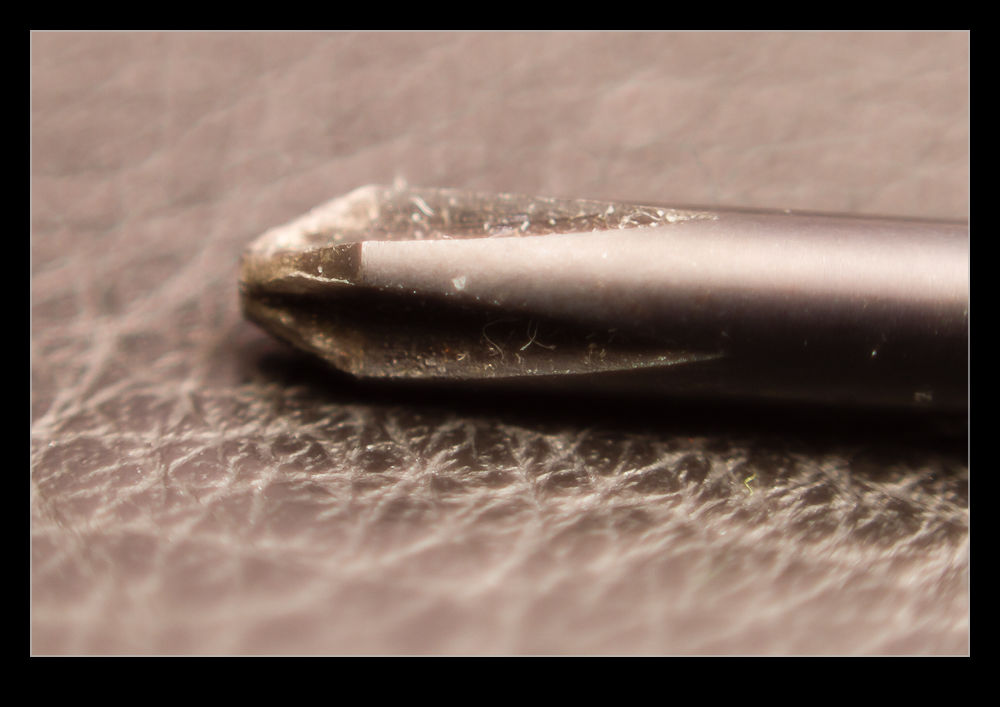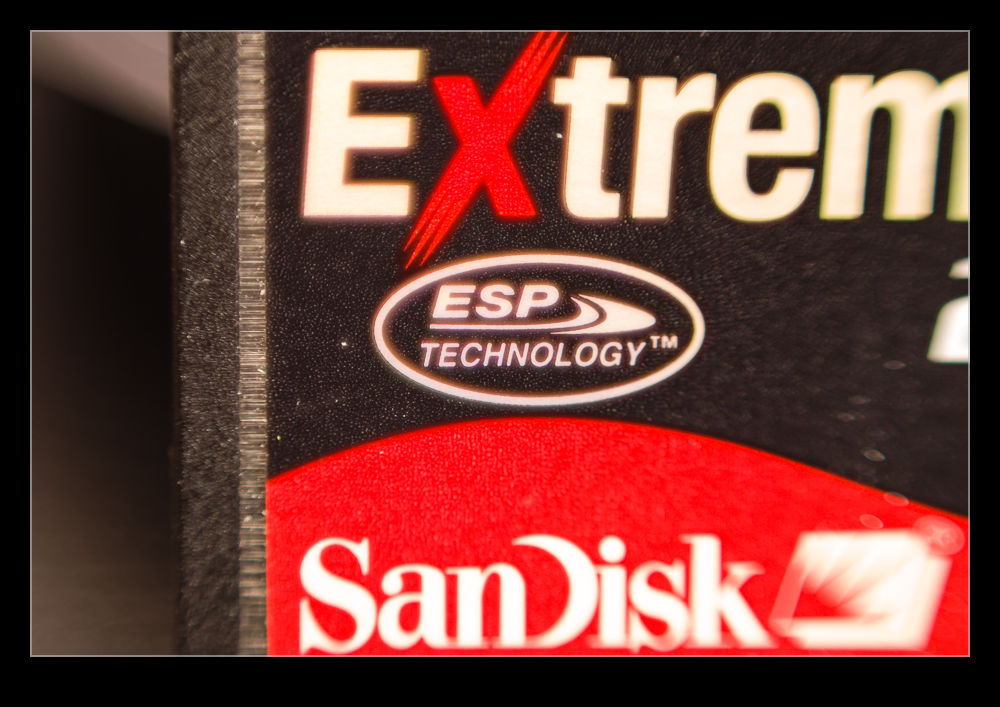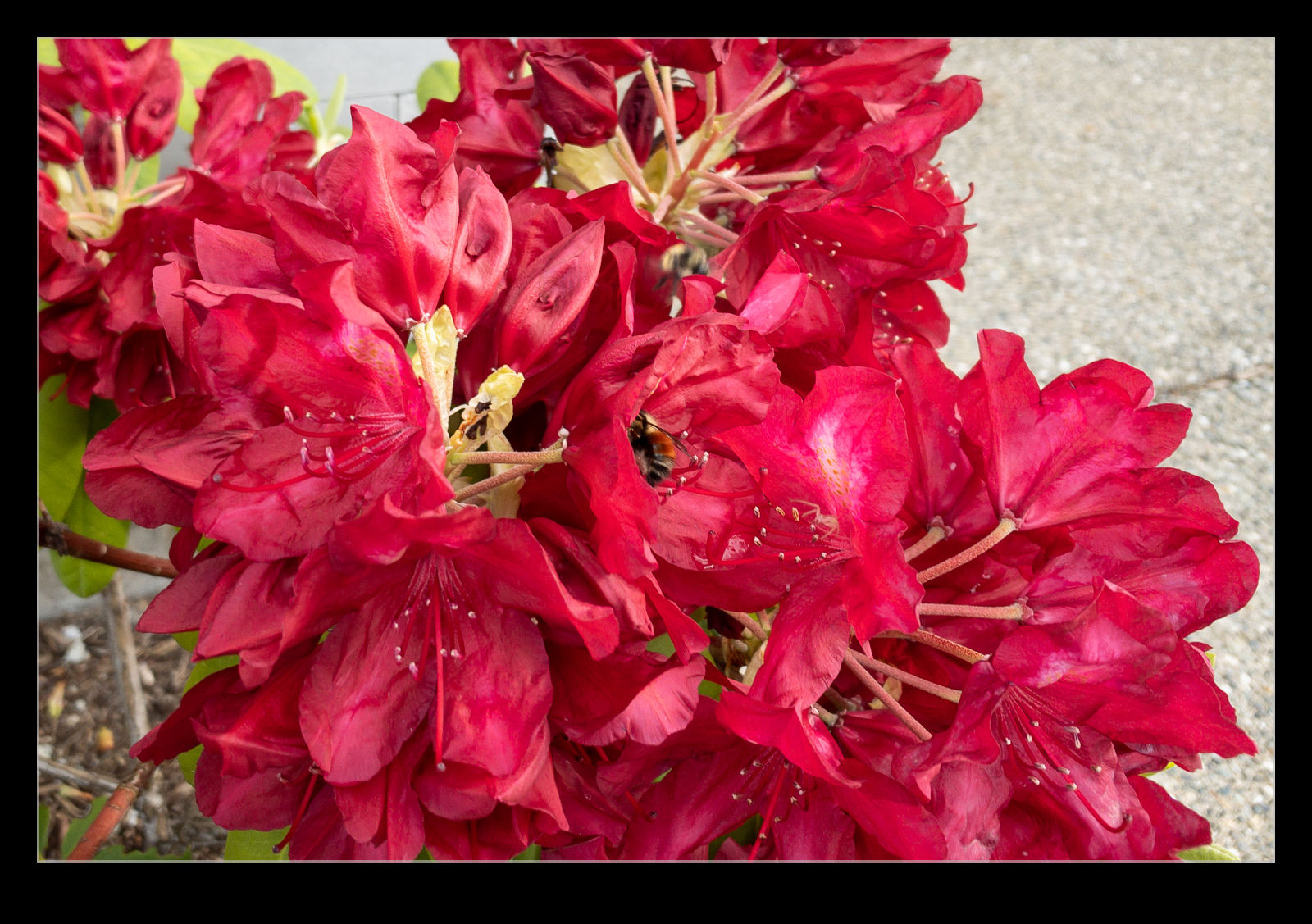 The Puget Sound area is currently abloom. Everywhere you look there are flowers. It is quite beautiful. We haven’t seen too many hummingbirds on our feeder recently and it’s not hard to see why when they have so many places to feed right now. We have some blooms in our front yard too and this means the bees are visiting. I decided to try and use the macro lens to get some shots of them. My lens is a Tokina unit. I bought it for the negative scanning process for which it worked well. However, the focusing drive is not fantastic and it hunts a bit when I use it for things other than manual mode. However, it is still worth a shot. Here are a couple of bee shots from the yard. I can’t go anywhere so I may as well shoot at home!
The Puget Sound area is currently abloom. Everywhere you look there are flowers. It is quite beautiful. We haven’t seen too many hummingbirds on our feeder recently and it’s not hard to see why when they have so many places to feed right now. We have some blooms in our front yard too and this means the bees are visiting. I decided to try and use the macro lens to get some shots of them. My lens is a Tokina unit. I bought it for the negative scanning process for which it worked well. However, the focusing drive is not fantastic and it hunts a bit when I use it for things other than manual mode. However, it is still worth a shot. Here are a couple of bee shots from the yard. I can’t go anywhere so I may as well shoot at home!
Tag Archives: macro
Update on the Negative Scanning
 I wrote about the set up I had created for scanning negatives using a digital camera a while back. Since writing that, I have been working on a lot more scans and have gained some additional experience. This has resulted in a few changes to the configuration so I thought I would share those too. Overall I am very happy with the results I am getting as a result of the updates. Things could be better but that would involve considerably more expense and the need just isn’t there.
I wrote about the set up I had created for scanning negatives using a digital camera a while back. Since writing that, I have been working on a lot more scans and have gained some additional experience. This has resulted in a few changes to the configuration so I thought I would share those too. Overall I am very happy with the results I am getting as a result of the updates. Things could be better but that would involve considerably more expense and the need just isn’t there.
The first change I made was to use a different lens. I had been using the 24-105. It was pretty close to the film plane and was sensitive to getting the alignment spot on. I had a few times when focus was not consistent across the shot. I thought it might be better to try a longer lens further away and this proved to be a big help. I have my old 100-400 still so I hooked that up. It makes for a slightly higher position but I can use the zoom quite well although it needs more of the extension tubes to focus properly. It does result in good focus although I tend to focus manually as the autofocus does not seem happy in this setup.
 I was using Liveview quite a bit and I discovered that the old batteries I have were not lasting long at all. Rather than buy new batteries, I went to Amazon and picked up an AC adaptor that replaces the battery for about $15. Now I can scan as long as I like without having to have batteries charging in the background.
I was using Liveview quite a bit and I discovered that the old batteries I have were not lasting long at all. Rather than buy new batteries, I went to Amazon and picked up an AC adaptor that replaces the battery for about $15. Now I can scan as long as I like without having to have batteries charging in the background.
I also have modified slightly the light pad. I found I was moving it around a lot more than I realized as I moved the negatives and swapped strips. A little gaffer tape now holds it pretty much in place. This means I can have the lens zoomed more closely to the full frame of the film which allows for a higher resolution scan.
With everything tethered in to Lightroom, the import process is pretty smooth. The preset I use is okay but I am regularly tweaking for the white balance and exposure. This is not too big of a deal. I find I can get better detail out of the shots than was possible with the scanner and using the raw convertor gives me plenty to work with. They are still limited by the quality of the original shots of course!
Overall I am very pleased. I can scan a lot of stuff very quickly compared to the old way and now I am happy to scan a whole shoot without worrying about whether any of them could be ignored. It is quicker to scan them and then discard them afterwards. I am scanning stuff that I have been thinking about for a long time and rescanning shots that had been done before but really were not great. Of course, now I have even more stuff to do in whatever spare time there is so maybe this wasn’t such a good idea after all!
Cheap Macro
 While the idea of trying macro photography has always been of interest to me, I have never got around to actually doing it aside from an old lens I had in my pre-autofocus days that had a macro setting. The idea of renting a macro lens had occurred to me but the reason to do it hadn’t come up and I didn’t feel like renting the lens without having something to use it on.
While the idea of trying macro photography has always been of interest to me, I have never got around to actually doing it aside from an old lens I had in my pre-autofocus days that had a macro setting. The idea of renting a macro lens had occurred to me but the reason to do it hadn’t come up and I didn’t feel like renting the lens without having something to use it on.
 Then I remembered reading about reversing a lens to use it for macro. I have a 50mm that I I hand held in reverse to see how well the macro effect would work. It seemed pretty good so I decided to get a mounting ring to reverse the lens on the camera. Amazon came up with a bunch of options and the one I got set me back the enormous total of $8!
Then I remembered reading about reversing a lens to use it for macro. I have a 50mm that I I hand held in reverse to see how well the macro effect would work. It seemed pretty good so I decided to get a mounting ring to reverse the lens on the camera. Amazon came up with a bunch of options and the one I got set me back the enormous total of $8!
 The simple answer is that it works. It is a little inflexible to use compared to something designed for the task but it does work. The depth of field is extremely shallow and you get some odd distortion across the edges of the image. Obviously there is no focus or exposure control. I just set the camera to aperture priority mode and dial in the normal f/1.8 of the lens and the exposure seems to work out pretty well. Then it is a case of moving the camera around to get focus. Not something I am going to do a lot but, for $8, I don’t have to worry about getting a lot of use out of it!
The simple answer is that it works. It is a little inflexible to use compared to something designed for the task but it does work. The depth of field is extremely shallow and you get some odd distortion across the edges of the image. Obviously there is no focus or exposure control. I just set the camera to aperture priority mode and dial in the normal f/1.8 of the lens and the exposure seems to work out pretty well. Then it is a case of moving the camera around to get focus. Not something I am going to do a lot but, for $8, I don’t have to worry about getting a lot of use out of it!


